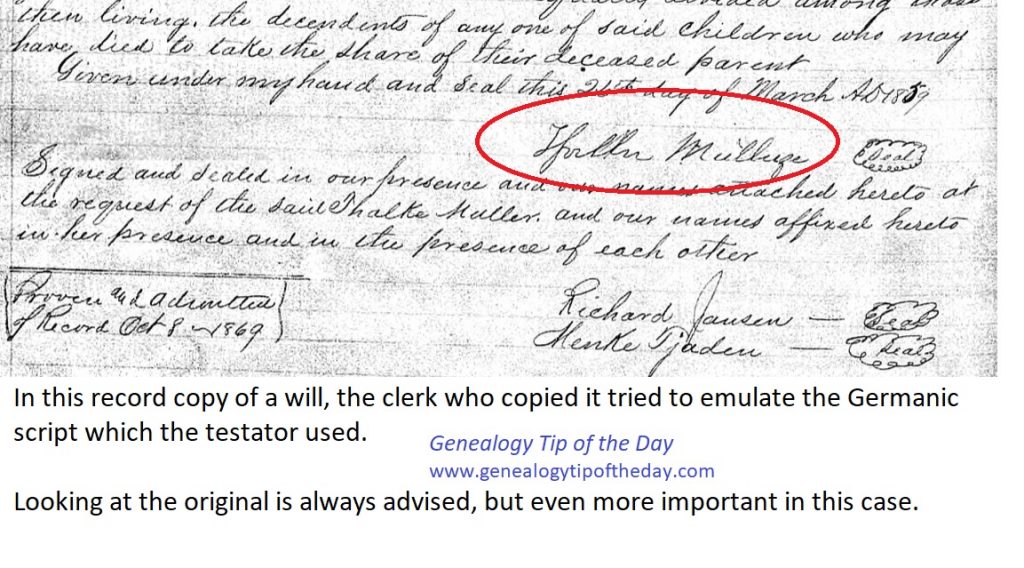When record clerks make record copies of documents, their prime directive is to copy the document as accurately as possible. The main reason is that the record copy of a document (will, deed, bond, etc.) in a courthouse functions as the legal equivalent of the original if the original is lost. Before typewriters, clerks would hand copy original records into ledgers.
Most of the time the clerk would not go to any effort to make the signature look like the signature on the document. But in some cases, particularly if the signature is not in English, the clerk would try to “copy” the signature to match exactly what was written–more “drawing the signature” instead of copying it.

It can be seen in the record copy of the will of Thalke Muller recorded in the probate records of the Adams County, Illinois, Circuit Clerk in 1869. The rest of the document is in the same script–even the signatures of the two witnesses. Again, the image shown was made from the record copy of the will–a verbatim and accurate transcription. It was not made from the actual will.
What the researcher should do in this case is get the original will. There it will be easier to see Muller’s actual signature. The clerk’s drawing of the signature may have been reasonably accurate, but there may be nuances to it that he missed.







One response
[…] * Clerk Tried to “Copy” Signature by Michael John Neill on Genealogy Tip of the Day. […]